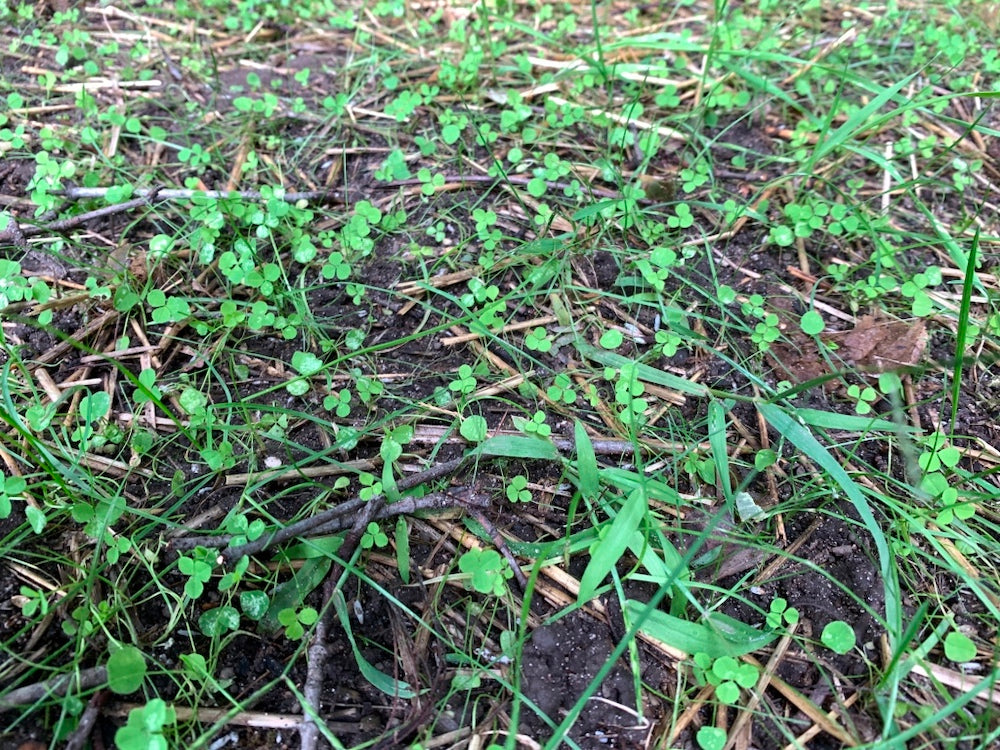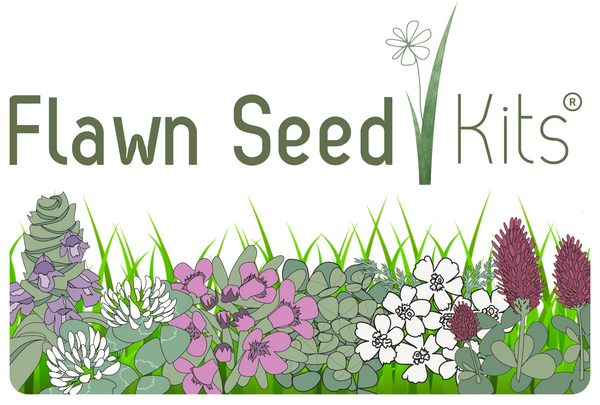
A Newborn Flawn and How to Care for it
Share
So, you’ve spread your flowering lawn seed, now what? Following a few simple guidelines throughout the first season will ensure a successful flowering lawn transformation.
If you seeded in winter over a fresh snowfall on a calm day, relax, for now. Your seeds are safe and will work their way down to the soil throughout the remainder of winter. When spring comes and the soil temperatures warm up the seeds will sprout. Although you may want to just let everything grow in the spring, it’s important to remember that the grass you seeded into is already a strong mature plant and left unmowed would crowd out the new wildflower seedlings early on in spring and leave you with no flowering plants by summer.
Mowing after seeding is also very important if you seed in spring, summer, or fall. You want to keep the grass at 3-3.5 inches for the remainder of the first growing season. When the grass grows to be four inches or taller it flops over and creates a canopy shading the ground and would prevent light from reaching the small wildflower seedlings. Mowing regularly at 3-3.5 inches prevents the already mature grass from suffocating the baby wildflower seedlings.
Watering regularly through the germination or sprouting process is critical even though you may not see any new life yet from the seeds. How long it takes for the seeds to sprout can vary greatly by species. Clovers like the perennial Dutch White Clover and the annual Crimson Clover have short germination periods sprouting in several days to a week. Self-Heal or “Heal-All” usually takes a couple weeks to germinate, and creeping thyme usually takes three weeks to germinate depending on soil temperatures and may not even germinate the same season you spread it if proper conditions aren’t met.
In an existing grass area it will be very hard to see the newborn seedlings. You may need to get down onto your knees and spread apart the grass to find the baby seedlings which will be small than your fingernail even after a few weeks.

You want to keep the area you seeded moist for the first few weeks and once you start to see growth it is important to prevent the top inch of the soil from completely drying out. The small roots of the newborn seedlings are very short and will not be able to reach water on their own. Rainfall can assist you in this process but cannot be solely relied upon. Areas that are seeded in full sun or poor soil will need even more frequent waterings. Water lightly 10-15 minutes making sure not to create any standing water or wash away any seed.
Consider having your soil tested to determine the percentage of organic matter. Ideal soil organic matter is 3-5%. Below 3% your soil will hold less nutrients and moisture and create a tougher environment for your seedlings to grow into. Although no fertilizer application is necessary when performing a flowering lawn transformation, if your soils organic matter is very low it would be a good idea to top-dress the seeded area with a clean compost. This will increase the nutrient and water holding capacity of the soil and enrich it with beneficial microbes. Look for a bagged dry compost product like Sustane’s Concentrated Compost 2-3-3 or Purple Cow’s Activated Compost.
Let’s review. After seeding we want to keep the area mowed at 3-3.5 inches for the remainder of the growing season. Water regularly for 10-15 min through the first few weeks as the seeds germinate and then water as needed through the remainder of the first season to prevent the top inch of the soil from completely drying out. Following these two simple guidelines through the first season will help to ensure your newborn seedlings grow in nice and strong alongside your grass rather than get crowded out. Next season your flowering plants should be mature and strong enough to compete with the grass but may still require a watering now and again to survive heat and drought conditions.
Be sure to check out the FAQs page for any additional questions you may have or feel free to reach out to us.
